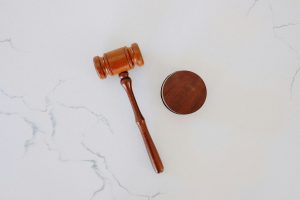Late payments in temporary staffing contracts can significantly disrupt business operations and cash flow. Tackling these issues requires a structured approach to ensure efficient debt recovery while maintaining professional relationships. This article outlines a strategic method to manage and recover late payments through a three-phase recovery system, assessment of debt recovery viability, decision-making regarding legal proceedings, financial considerations in debt collection, and effective communication strategies.
Key Takeaways
- Implement a structured three-phase recovery system to address unpaid staffing contracts, starting with immediate action within the first 24 hours.
- Conduct a thorough investigation of the debtor’s financial status to assess the viability of debt recovery and make informed decisions on case closure or litigation.
- Understand the implications of legal action, including the costs and potential outcomes, to make a calculated decision on initiating legal proceedings.
- Analyze collection rates, fee structures, and the impact of claim age and amount on collection costs to optimize financial outcomes in debt collection.
- Employ multiple communication channels and maintain persistence in contact attempts to negotiate settlements and resolve disputes effectively.
Understanding the Recovery System for Unpaid Staffing Contracts
Overview of the Three-Phase Recovery System
The 3-Phase Recovery System for debt collection is a structured approach designed to maximize recovery efforts. Phase One kicks off with immediate communication strategies. Within 24 hours, debtors receive the first of several notices and are subject to skip-tracing to ensure accurate contact and financial information. Persistent outreach through calls, emails, and texts is the norm during this initial phase.
In Phase Two, the case escalates to our network of affiliated attorneys. Debtors face formal legal correspondence and increased pressure through attorney-led communication efforts. If these attempts falter, the system progresses to the final stage.
Phase Three involves a critical assessment of the debtor’s assets and the viability of litigation. Should the prospects of recovery appear dim, case closure is recommended, incurring no cost to you. Conversely, if litigation is advised, upfront legal costs will be required, with the potential for a lawsuit to recover the full amount owed, including filing costs.
The decision to proceed with litigation is pivotal, weighing the upfront investment against the likelihood of successful debt recovery.
Our fee structure is competitive, with rates varying based on claim age, amount, and volume. The goal is to align our success with your recovery, ensuring a partnership focused on results.
Initial Actions Taken Within 24 Hours
Within the critical first day of identifying a late payment, swift and decisive action sets the stage for successful recovery. Immediate contact is key; debtors receive the first of four letters and are subject to skip-tracing to uncover optimal contact and financial information. The collection team engages with a multi-channel approach, including phone calls, emails, and texts.
Persistence is crucial during this phase:
- Daily attempts to reach the debtor are standard.
- A resolution is sought through consistent communication.
- If no agreement is reached, preparation for Phase Two begins.
The goal is to establish a dialogue and negotiate a resolution before escalating the matter.
Should these efforts not yield results, the transition to the next phase is prompt, ensuring no momentum is lost in the pursuit of what is owed.
Transition to Legal Action and Attorney Involvement
When the recovery system escalates to legal action, a critical decision point is reached. You must choose whether to litigate or not. If litigation is pursued, upfront legal costs are inevitable, typically ranging from $600 to $700. These costs cover court fees and filing expenses, necessary to initiate the lawsuit.
Attorney involvement signifies a shift in strategy. The attorney will draft demand letters and attempt to contact the debtor, adding legal weight to your claims. Should litigation proceed unsuccessfully, rest assured, you will owe nothing further to the firm or attorney.
Here’s a quick glance at the fee structure:
| Claims Quantity | Accounts < 1 Year | Accounts > 1 Year | Accounts < $1000 | Attorney Placed Claims |
|---|---|---|---|---|
| 1-9 | 30% | 40% | 50% | 50% |
| 10+ | 27% | 35% | 40% | 50% |
The choice to engage in legal proceedings is pivotal, with each path carrying its own set of implications and potential financial outcomes.
Assessing the Viability of Debt Recovery
Investigating the Debtor’s Financial Status
Before deciding on litigation, a thorough investigation of the debtor’s financial status is crucial. This step determines the feasibility of debt recovery and guides the subsequent actions.
- Skip-tracing and financial investigations provide valuable insights.
- Daily contact attempts for 30 to 60 days reveal the debtor’s responsiveness.
- If recovery seems unlikely, case closure is recommended to avoid unnecessary costs.
The decision to litigate hinges on the debtor’s ability to pay. Assessing assets and liabilities informs the likelihood of successful recovery.
Understanding the debtor’s financial landscape is not just about numbers; it’s about strategy. A solvent debtor may warrant the pursuit of litigation, while an insolvent one may necessitate a different approach.
Rates and fees for collection services vary, with factors such as claim age and amount influencing the cost. It’s essential to weigh these financial considerations against the potential recovery.
Determining the Likelihood of Successful Recovery
Assessing the potential for successful debt recovery hinges on a meticulous evaluation of the debtor’s assets and the facts of the case. The age and amount of the debt are critical factors influencing recovery rates. Legal options for recovering late payments include demand letters, legal action with upfront costs, or standard collection activities.
Deciding on litigation requires weighing the upfront legal costs against the potential for recovery. These costs typically range from $600 to $700, depending on jurisdiction.
Our competitive collection rates are tailored to the claim’s age and amount. For instance, accounts under one year are charged at 30% of the amount collected, while older accounts incur a 40% fee. Smaller accounts under $1000 have a 50% rate. If litigation is pursued, the rate is consistently 50% across all accounts.
Recommendations for Case Closure or Litigation
When the recovery of unpaid staffing contracts reaches a critical juncture, our firm provides clear guidance. Closure is advised if the debtor’s assets suggest recovery is unlikely. This results in no fees owed to us or our affiliated attorneys. Conversely, if litigation is the path chosen, be prepared for upfront legal costs, typically ranging from $600 to $700.
Litigation is a significant decision, involving court costs and filing fees. Should you opt for legal action, our affiliated attorney will pursue all owed monies, including legal expenses. A failed litigation attempt will not incur additional costs from our firm.
Our fee structure is straightforward:
For 1-9 claims, expect a collection rate of 30% for accounts under a year old, 40% for older accounts, and 50% for accounts under $1000 or placed with an attorney.
For 10 or more claims, the rates adjust to 27% for newer accounts, 35% for older ones, and 40% for accounts under $1000, with a consistent 50% for attorney-placed accounts.
Deciding between case closure and litigation hinges on a careful assessment of the debtor’s financial status and the potential for successful recovery. Choose wisely, as the implications of this decision will impact the financial outcome of your staffing contract recovery efforts.
Navigating the Decision to Initiate Legal Proceedings
Understanding the Implications of Legal Action
Embarking on legal proceedings is a pivotal moment in debt recovery. Deciding to litigate can be a double-edged sword; it’s essential to weigh the potential gains against the risks and costs involved. Legal action should be the last resort after exhausting all other recovery efforts.
Legal action is not just about enforcing payment terms; it’s a strategic decision that impacts your business’s financial health.
Before initiating litigation, consider the following:
- The upfront legal costs, including court and filing fees.
- The debtor’s ability to pay, assessed through a thorough investigation.
- The potential for successful recovery versus the likelihood of case closure with no further obligations.
Remember, litigation is a step taken when other strategies, such as clear obligations and multi-phase recovery, have failed. It’s a serious commitment that requires careful deliberation.
Evaluating the Costs and Benefits of Litigation
Before initiating legal proceedings, it’s crucial to weigh the financial implications against the potential gains. Consider the upfront legal costs, such as court fees and filing charges, which can range from $600 to $700. These are necessary expenditures to set the legal wheels in motion.
Litigation is not just about the immediate costs; it’s also about the long-term financial impact. If the case is unsuccessful, the collection agency’s fee structures come into play. For instance, accounts under a year old are charged at 30% of the amount collected, while older accounts or those under $1000 incur higher rates.
The decision to litigate should be based on a clear understanding of the recovery system phases, financial considerations, and the importance of communication in debt resolution.
Here’s a quick breakdown of collection rates:
| Claims Submitted | Accounts < 1 Year | Accounts > 1 Year | Accounts < $1000 | Attorney Involved |
|---|---|---|---|---|
| 1-9 | 30% | 40% | 50% | 50% |
| 10+ | 27% | 35% | 40% | 50% |
Remember, these rates are contingent upon successful collection. The choice to pursue legal action should be informed by a thorough investigation of the debtor’s assets and the likelihood of recovery. If the prospects are dim, it may be wiser to close the case and avoid further expenses.
The Process of Filing a Lawsuit and Potential Outcomes
Deciding to initiate legal proceedings is a pivotal moment in debt recovery. Once the decision is made, the upfront legal costs come into play. These typically range from $600 to $700, depending on the debtor’s jurisdiction. Upon payment, our affiliated attorney files the lawsuit, aiming to recover all monies owed, including filing costs.
The potential outcomes are binary: successful recovery or case closure. If litigation leads to recovery, fees are contingent on the amount and age of the claim, with rates varying from 30% to 50%. However, if attempts fail, the case is closed, and you owe nothing further.
The choice to litigate is significant, not just for the potential to recover debts, but also for the financial implications it carries.
It’s essential to understand the viability of litigation before proceeding. Our website offers insights for small firms on handling payments, assessing litigation viability, and understanding upfront legal costs before pursuing legal action.
Financial Considerations in Debt Collection
Analyzing Collection Rates and Fee Structures
Understanding the fee structures and collection rates is crucial for debt recovery in temporary staffing contracts. Bold decisions must be made when assessing the cost-effectiveness of pursuing unpaid debts.
Collection rates vary depending on several factors, including the age of the claim and the total amount owed. For instance:
- Accounts under 1 year: 30% (1-9 claims) or 27% (10+ claims) of the amount collected.
- Accounts over 1 year: 40% (1-9 claims) or 35% (10+ claims) of the amount collected.
- Accounts under $1000.00: 50% of the amount collected, regardless of the number of claims.
- Accounts placed with an attorney: 50% of the amount collected.
It’s essential to weigh the potential recovery against the fees incurred. If the likelihood of successful collection is low, case closure may be the most prudent course of action.
Legal action introduces additional costs, typically ranging from $600 to $700 for court and filing fees. These upfront costs must be considered when deciding to file a lawsuit. Remember, if litigation fails, you owe nothing further to the firm or the affiliated attorney.
Impact of Claim Age and Amount on Collection Costs
The age and size of a debt can significantly influence the cost of collection efforts. Older claims often require more resources to collect, leading to higher fees. Conversely, newer debts may be recovered with less expense. The amount of the debt also plays a crucial role; smaller debts may not justify the costs of aggressive collection tactics.
Collection rates vary depending on the age and amount of the claim:
- Accounts under 1 year: 30% (1-9 claims) or 27% (10+ claims) of the amount collected.
- Accounts over 1 year: 40% (1-9 claims) or 35% (10+ claims) of the amount collected.
- Accounts under $1000.00: 50% of the amount collected, regardless of the number of claims.
When considering litigation, be aware of the upfront legal costs, which typically range from $600 to $700. These costs are in addition to the collection rates and are non-refundable, even if the collection attempts fail.
Payment Obligations in the Event of Unsuccessful Litigation
When litigation doesn’t lead to recovery, understanding your financial obligations is crucial. No win, no fee—if legal efforts fail, you owe nothing to the firm or affiliated attorney. This policy ensures that your financial risk is minimized.
Initial costs are a reality, however. Expect to cover court costs and filing fees upfront, typically ranging from $600 to $700. These are necessary to initiate legal proceedings but are not refunded if the case is unsuccessful.
The decision to litigate should weigh the potential for recovery against these upfront expenses.
Collection service rates are contingent on the age and amount of the claim, influencing overall costs. Here’s a quick breakdown:
- Accounts under 1 year: 27% to 30% of the amount collected.
- Accounts over 1 year: 35% to 40% of the amount collected.
- Small claims under $1000: 40% to 50% of the amount collected.
- Claims requiring attorney involvement: 50% of the amount collected.
Strategies for Effective Communication and Resolution
Utilizing Multiple Channels for Debtor Outreach
Maximizing the reach to debtors involves a strategic mix of communication methods. Diversify your approach to include emails, phone calls, text messages, and even physical letters. This multi-channel outreach ensures that the debtor is reminded of their obligations through various touchpoints.
Persistence is key in debt recovery. A structured schedule of contact attempts can increase the likelihood of a response. Consider the following sequence:
- Initial contact within 24 hours of a missed payment
- Follow-up every two days for the first week
- Weekly touchpoints thereafter until a resolution is reached
By maintaining a consistent and varied approach, you reinforce the urgency of the matter without overwhelming the debtor.
Remember, each communication channel may resonate differently with debtors. Tailoring your strategy to the debtor’s preferences can lead to more productive interactions and a higher chance of successful debt recovery.
Frequency and Persistence in Contact Attempts
Maintaining a consistent and persistent approach in contacting debtors is crucial. Daily attempts should be made in the initial 30 to 60 days, utilizing all available communication methods.
- Phone calls
- Emails
- Text messages
- Faxes
This multi-channel strategy increases the likelihood of reaching a resolution before escalating to legal action. If these attempts fail, the case transitions to the next phase of recovery.
Persistence is key; frequent contact maintains pressure and can lead to quicker resolutions.
Timing is everything. Staggering communication throughout the day can catch debtors at different times, improving contact rates. Remember, each attempt is an opportunity to negotiate and potentially settle the debt.
Negotiating Settlements and Resolving Disputes
Effective negotiation is the linchpin of successful debt recovery. Legal professionals negotiate payment terms for unpaid contracts, aiming to avoid the costs and time of litigation. It’s essential to approach negotiations with a clear strategy and realistic expectations.
Persistence in communication is key. Multiple outreach attempts through calls, emails, and faxes increase the likelihood of reaching a resolution. When a settlement is on the table, consider the debtor’s ability to pay and the age of the claim:
- For claims under 1 year: Aim for a lower settlement rate.
- For claims over 1 year: Expect higher settlement rates due to increased difficulty in recovery.
Remember, a negotiated settlement is often more cost-effective than pursuing litigation, which can incur significant fees and uncertain outcomes.
Finally, if negotiations stall, reassess the viability of the case. If recovery seems unlikely, case closure may be the most prudent course of action. However, if the debtor’s assets suggest possible recovery, litigation may be warranted. The decision to litigate should weigh the upfront legal costs against the potential for successful debt recovery.
Mastering the art of communication is crucial when it comes to resolving disputes and collecting debts. At Debt Collectors International, we specialize in dispute resolution and accounts receivable management, ensuring that your financial interests are effectively represented. Our skilled negotiators are ready to mediate and resolve any disputed claims, saving you the expense and hassle of legal proceedings. Don’t let unpaid debts disrupt your business—visit our website to learn more about our services and take the first step towards reclaiming what’s yours. Act now and ensure your cash flow remains uninterrupted.
Frequently Asked Questions
What immediate actions are taken within the first 24 hours of a late payment report?
Within 24 hours of placing an account, a series of four letters are sent to the debtor, the case is skip-traced, and collectors attempt to contact the debtor using various communication methods such as phone calls, emails, text messages, and faxes.
What happens if initial collection efforts in Phase One fail?
If all attempts to resolve the account fail in Phase One, the case moves to Phase Two, where it is forwarded to one of our affiliated attorneys within the debtor’s jurisdiction for further legal action.
What are the possible recommendations after Phase Three investigation?
After Phase Three investigation, the recommendation will either be to close the case if recovery is unlikely, or to proceed with litigation if there is a chance of successful recovery.
What are the financial obligations if litigation is recommended but not pursued?
If litigation is recommended but you decide not to proceed, you can withdraw the claim or continue with standard collection activity without owing anything to the firm or affiliated attorney.
What upfront costs are associated with filing a lawsuit?
If you decide to proceed with legal action, you will be required to pay upfront legal costs such as court costs and filing fees, which typically range from $600.00 to $700.00.
How are collection rates determined by DCI?
DCI’s collection rates are competitive and tailored, depending on the number of claims and their age and amount. For example, accounts under 1 year in age may be charged 30% of the amount collected for 1 through 9 claims, while accounts placed with an attorney are charged 50% of the amount collected.





